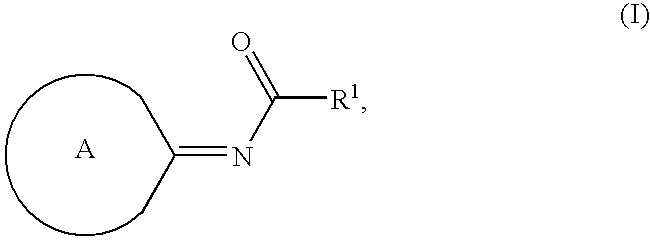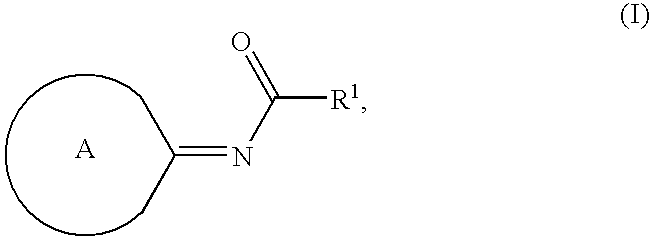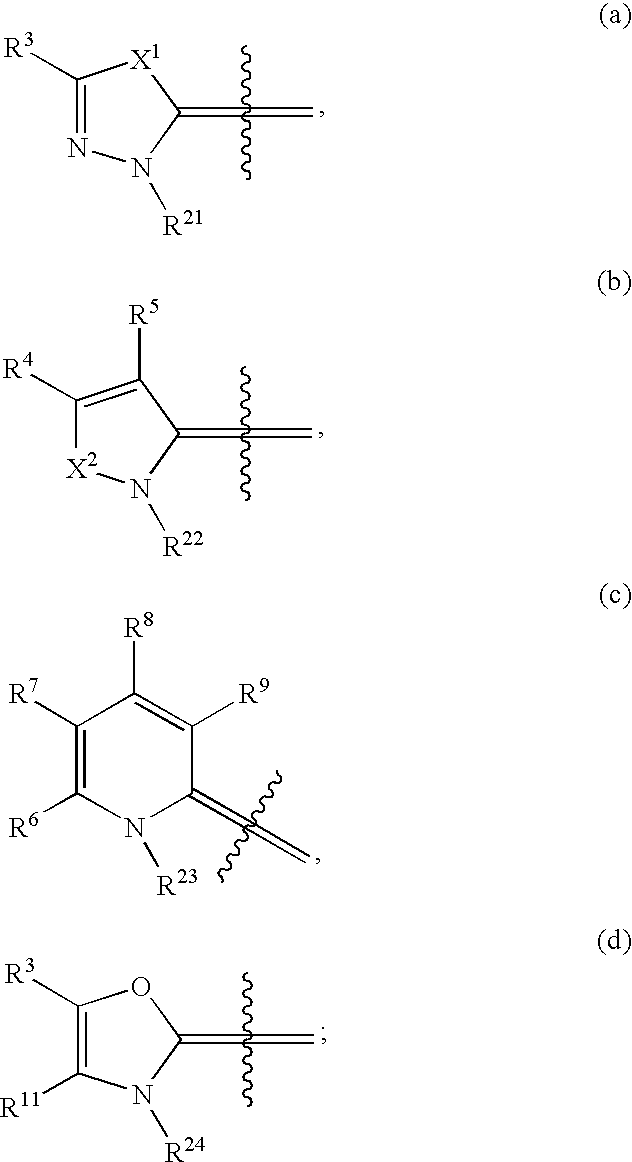Compounds as cannabinoid receptor ligands
a cannabinoid receptor and compound technology, applied in the field of cannabinoid receptor ligands, can solve the problems of limited development and clinical utility of nonselective cb agonists, site becomes a source of ongoing pain and tenderness, and no currently available therapies or drugs effectively treat all types of nociceptive and neuropathic pain states
- Summary
- Abstract
- Description
- Claims
- Application Information
AI Technical Summary
Benefits of technology
Problems solved by technology
Method used
Image
Examples
example 1
N-[(3E)-2-butyl-5-tert-butyl-1-methyl-1,2-dihydro-3H-pyrazol-3-ylidene]-2-(3-hydroxy-3-methylbutyl)-5-(trifluoromethyl)benzamide
example 1a
3-tert-butyl-1-butyl-1H-pyrazol-5-amine
[0264]A mixture of n-butylhydrazine oxalate (10 g, 56 mmol) and 4,4-dimethyl-3-oxopentanenitrile (7.0 g, 56 mmol) in ethanol (100 mL) was warmed to 85° C. and was allowed to stir for 3 hours. The mixture was cooled to ambient temperature, and concentrated under reduced pressure. The residue was dissolved in CH2Cl2 (50 mL) and saturated aqueous NaHCO3 (50 mL) w added. The layers were separated and the aqueous layer was extracted with CH2Cl2 (3×10 mL). The combined organic extracts were dried over anhydrous Na2SO4, filtered, and concentrated under reduced pressure to provide the title compound (10 g, 51 mmol, 91% yield) which was used without purification. MS (DCI / NH3) m / z 196 (M+H)+.
example 1b
N-(3-tert-butyl-1-butyl-1H-pyrazol-5-yl)-2,2,2-trifluoroacetamide
[0265]To a solution of Example 1A (10.0 g, 51 mmol) and triethylamine (21.4 mL, 154 mmol) in CH2Cl2 (100 mL) at 0° C. was added 2,2,2-trifluoroacetic anhydride (7.1 mL, 51 mmol) dropwise via syringe pump over 20 min. The ice-bath was removed after the addition was complete and the mixture was stirred at ambient temperature for 1 hour. The mixture was concentrated under reduced pressure and the residue was purified by column chromatography (SiO2, 40% hexanes / EtOAc) to provide the title compound (13.5 g, 46 mmol, 91% yield). MS (DCI / NH3) m / z 292 (M+H)+.
PUM
| Property | Measurement | Unit |
|---|---|---|
| total volume | aaaaa | aaaaa |
| pH | aaaaa | aaaaa |
| temperature | aaaaa | aaaaa |
Abstract
Description
Claims
Application Information
 Login to View More
Login to View More - R&D
- Intellectual Property
- Life Sciences
- Materials
- Tech Scout
- Unparalleled Data Quality
- Higher Quality Content
- 60% Fewer Hallucinations
Browse by: Latest US Patents, China's latest patents, Technical Efficacy Thesaurus, Application Domain, Technology Topic, Popular Technical Reports.
© 2025 PatSnap. All rights reserved.Legal|Privacy policy|Modern Slavery Act Transparency Statement|Sitemap|About US| Contact US: help@patsnap.com



